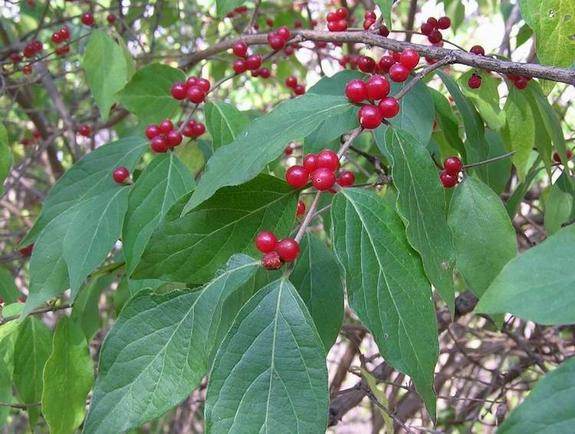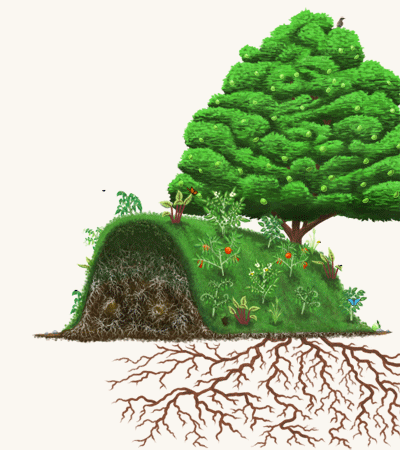Since we have an expert on the subject of the subject of plants often considered invasive, I thought this might be the perfect time to start getting inputs into a local problem plant. There are very few plants that I consider a real problem. Most of the time they can be readily managed with the right forethought. Even the infamous Kudzu can be controlled with a rotation of goats. Bush Honeysuckle is one of the ones I see as a major problem.
It is a strong survivor among the plant world, being terribly difficult to kill off once it has a chance to take root. Birds love the bright red berries and spread it heavily anywhere a single bush can get established. It puts on leaves faster than anything else in the area and drops them later than anything else. It can grow several feet in a single season, eventually becoming a sprawling bush of 15 or more feet. Almost all of the light is blocked below it once fully established, so that it eventually kills out all ground cover and prevents new trees from getting started. Over the course of years, it eliminates every ounce of diversity in the areas where it has gotten thick.
Add to this that no animal or insect acts as a predator to it and there seems to be no way of stopping or controlling it. At best, we lop it off low to the ground and repeat that cycle every year for the rest of our lives. Even salting the earth wouldn't assure it is dead, though I am unwilling to do that sort of thing. I would love to hear ideas of how in the world to control this plant so that other things have a chance to thrive in the same environment that it has taken root. Cutting down hundreds of bushes every year in even a small wooded acreage seems to be a terrible waste of energy if there might be another way.

A thin section of established plants. They grow much denser than this in my area and with way more cover.

Notice the lack of just about anything growing under them that isn't another honeysuckle.
Sweet smelling and very attractive, they make good plants for bees and a tasty drop of nectar for kids. One of the two reasons they were brought into the area originally.
The other reason they were brought into the area. Birds go crazy for these bright berries, so the Oxford Audubon Society thought they were the greatest thing since sliced bread.





















 1
1






















